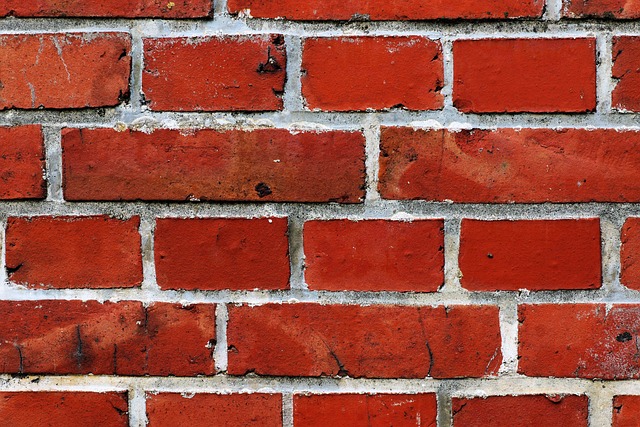Basement cracks, especially in stem walls, signal structural issues requiring prompt attention. Proper repair involves assessing crack severity, using suitable materials like cement or epoxy for minor cracks, and employing specialized techniques like carbon fiber wrapping for major defects. DIY repairs can be risky, as incorrect methods lead to weak fixes. Regular maintenance, including inspections and addressing moisture problems, is key to preventing costly repairs. Early detection of serious cracks indicates the need for professional Stem Wall Repair expertise.
Basement cracks can be more than just an aesthetic concern; they signal potential structural issues, especially when involving stem walls. This comprehensive guide delves into the intricate world of basement crack repair, focusing on stem wall repairs. We’ll explore common causes, from settlement to moisture intrusion, and their impact on your home’s stability. Learn effective assessment methods, discover a range of repair materials and techniques, and follow a step-by-step process for successful stem wall restoration.
Understanding Basement Crack Causes: Identifying Stem Wall Issues

Basement cracks can be both aesthetically displeasing and a cause for concern, especially when they indicate deeper structural issues. Understanding the root causes is essential for effective crack repair, particularly focusing on stem wall problems. The stem wall is a critical component of basement construction, acting as the load-bearing wall that connects the foundation to the main structure. Over time, various factors can contribute to its deterioration and subsequent cracking.
Stem wall issues often arise from improper construction, settlement of the soil, excessive moisture, or changes in temperature and humidity levels. For instance, rapid temperature shifts can cause the stem wall to expand and contract, leading to cracks. Identifying these problems early is key to preventing further damage. Regular inspections should be conducted to assess any signs of cracking, bulging, or misalignment in the stem wall. Addressing stem wall repair promptly not only improves the structural integrity of the basement but also ensures long-term stability and prevents costly repairs down the line.
Assessing the Extent of Damage: Cracks and Their Impact

Assessing the extent of damage is a crucial step in basement crack repair, especially when it comes to stem wall repair. Cracks in basement walls can range from mere cosmetic issues to serious structural concerns. Narrow, hairline cracks might be nothing more than normal settling, while wider, deeper cracks could indicate underlying problems like foundation movement or water intrusion. Identifying the type and severity of cracks is essential for determining the appropriate repair method.
Each crack has a story to tell about what’s happening beneath the surface. For instance, diagonal cracks suggest tension buildup, often caused by soil settlement or expansive clay in the vicinity. Horizontal cracks, on the other hand, could be indicative of water pressure pushing against the wall. By closely examining these cracks, homeowners can gather valuable insights that will guide them in choosing between minor cosmetic fixes and more comprehensive stem wall repair solutions.
Materials and Techniques for Effective Stem Wall Repair

When it comes to basement crack repair, stem wall repair is a critical component, especially for structural integrity and water prevention. The most common materials used include hydraulic cement, epoxy injections, and fiber-reinforced composites. Hydraulic cement, often in the form of mortar, is a popular choice due to its ability to set and harden within a short time, effectively filling cracks and preventing further damage. Epoxy injections, on the other hand, offer superior strength and flexibility, making them ideal for larger or more complex cracks. Fiber-reinforced composites provide an excellent solution for both structural support and cosmetic enhancement.
Techniques for stem wall repair vary based on the extent of the crack. For minor cracks, a simple application of hydraulic cement or epoxy can be effective. This involves cleaning the crack to remove any debris or existing material, then applying the chosen substance using a trowel or injectors. In cases of larger or structural cracks, a combination of methods might be required. This could involve carbon fiber wrapping for added strength and stability, followed by injection molding with epoxy to fill voids and reinforce the repair.
Step-by-Step Guide to Fixing Basement Cracks

Fixing basement cracks, especially in stem walls, is a crucial step in maintaining your home’s structural integrity and preventing further damage. Here’s a step-by-step guide to help you tackle this task effectively. Start by assessing the crack’s severity using a level and measuring tape. Minor cracks can often be repaired with epoxy injections or hydraulic cement, which are applied directly into the crack using a syringe or trowel. Ensure the area is clean and dry before filling.
For wider or deeper cracks, stem wall repair might be necessary. This involves removing any loose debris from the crack and nearby areas, then preparing the surface with a wire brush to ensure better adhesion for the chosen repair material. Next, apply a thin layer of a suitable structural joint compound or caulk to fill the crack, smoothing it out as you go. Finally, let it dry completely, sand it down for a smooth finish, and consider painting over it to blend in with your basement’s overall aesthetic.
Common Mistakes to Avoid During the Repair Process

During the basement crack repair process, homeowners often make mistakes that can lead to further damage or ineffective solutions. One of the most common errors is attempting DIY repairs without proper knowledge and tools. Basement cracks, especially those involving stem wall repair, require specialized expertise and materials to ensure structural integrity. Using incorrect products or methods can result in weak repairs that won’t hold up over time.
Another mistake to avoid is neglecting the root cause of the crack. Basements are prone to movement due to settlement, water pressure, or temperature changes. If the underlying issue isn’t addressed, cracks will keep reappearing. Proper inspection and identifying factors contributing to the crack are crucial for effective long-term solutions, ensuring a robust and durable stem wall repair.
Preventative Measures: Strengthening Your Basement's Structure

To prevent basement cracks, focusing on structural strength is key. One effective measure is stem wall repair, a process that reinforces the corners of your basement. These walls bear significant weight and are often vulnerable to damage, leading to cracks over time. By repairing and reinforcing them, you create a solid foundation, reducing the likelihood of future cracks.
Regular maintenance, including inspection and addressing any issues promptly, is crucial. Check for signs of movement or cracks in the walls and floor, and don’t hesitate to consult professionals for guidance. Implementing these preventative measures not only enhances the structural integrity of your basement but also saves you from costly repairs down the line.
When to Call in Professional Help for Serious Cracks

If you’ve noticed small cracks in your basement walls, you might be wondering if DIY methods can fix them. While minor cracks often occur due to normal concrete settlement and can be addressed with epoxy injections or hydraulic cement, more severe cracks could indicate a deeper issue that requires professional intervention. Serious cracks, especially those wider than a finger, extending vertically or horizontally, or intersecting other cracks, might signal problems with the foundation stem walls. These walls bear the load of the entire structure, so any compromise can have serious structural implications. In such cases, it’s crucial to call in experts specializing in basement crack repair and stem wall repair for an accurate diagnosis and effective long-term solution.
Long-Term Maintenance Tips for Basements and Stem Walls

Regular maintenance is key to preventing long-term damage and costly repairs for basement cracks, especially in stem walls. One effective strategy is to establish a routine inspection process, ideally annually or whenever significant changes are made to the property. During these checks, look for any signs of new cracks, moisture intrusion, or shifts in the foundation that could indicate underlying structural issues. Early detection allows for prompt action and less invasive repairs.
Additionally, addressing moisture problems is crucial for stem wall repair and overall basement health. Ensure proper drainage around the exterior of your home, including grading that redirects water away from the foundation. Install interior drainage systems if necessary to prevent water accumulation in the basement or crawl space, as this can lead to cracks widening over time. Regularly maintain these systems to keep them functioning effectively.
